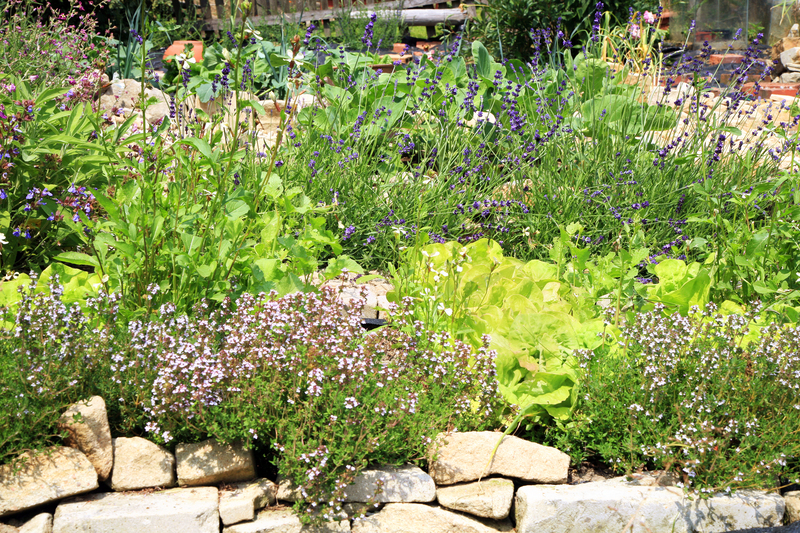Wintering Well: Defense Tactics for Your Garden Plants in Cold
Posted on 27/05/2025
Wintering Well: Defense Tactics for Your Garden Plants in Cold
As the vibrant colors of autumn fade and the crisp winter air settles in, gardeners everywhere are challenged with the crucial task of protecting their beloved plants from the harshness of the cold months ahead. Knowing how to defend your garden during winter is essential not only for plant survival but also for ensuring a flourishing landscape when spring returns. In this comprehensive guide, you'll discover winter defense tactics and strategies to help your garden plants thrive, even under the toughest winter conditions.
Understanding Winter Risks for Garden Plants
Before delving into protection methods, it's vital to understand the various dangers plants face during winter. The cold season brings a suite of challenges such as:
- Freezing Temperatures: Many plants are sensitive to subzero temperatures, leading to tissue damage or even plant death.
- Frost Heaving: The repeated freezing and thawing of soil can push plants out of the ground, exposing roots.
- Desiccation: Harsh winds and dry air can rob plants of necessary moisture.
- Pest Infiltration: Some insects and rodents seek shelter in gardens during winter, harming dormant plants.
Recognizing these risks is the first step in creating a robust winter defense plan for your garden.

Choosing Cold-Hardy Plants for Successful Wintering
Preparation begins with selection. Choosing the right plants for your hardiness zone dramatically increases the odds of winter survival. Perennials suited to your climate naturally withstand local winters, requiring less intervention. Some popular cold-resistant choices include:
- Conifers (Pines, Spruces, Firs)
- Ornamental Grasses
- Hellebores and Snowdrops
- Siberian Iris and Daylilies
- Hardy shrubs (Boxwood, Hydrangeas, Holly)
Tip: Always check the USDA Hardiness Zone on plant tags or seed packets before purchase.
Proven Defense Strategies for Garden Plants During Winter
1. Mulching - The First Line of Defense
Mulch acts as a protective blanket for soil and roots. Applying a generous 2- to 4-inch layer of organic mulch around your garden beds helps regulate soil temperature, retain moisture, and suppress weed growth. Choose from:
- Straw or hay (ensure it's seed-free)
- Shredded bark or wood chips
- Pine needles
- Compost
Note: Avoid piling mulch directly against plant stems to prevent rot. Instead, leave a small gap at the base.
2. Watering Wisely Before the Freeze
Hydrated plants endure winter stress far better than dry ones. Deep water your plants in late autumn, just before the ground freezes. This step is crucial for evergreens, which continue to lose water through their leaves all winter.
Water only when the soil is dry, as waterlogged roots can also be harmful during cold months.
3. Wrapping and Covering Sensitive Plants
For tender plants and young saplings, physical barriers provide additional warmth and shelter:
- Burlap wraps for shrubs and small trees
- Frost cloths or horticultural fleece for beds and low plants
- Cloche covers or cold frames for vegetables and tender perennials
Ensure covers do not touch foliage directly, as this can "burn" the leaves when temperatures fluctuate.
4. Wind Protection
Winter winds can desiccate and damage even the hardiest plants. Create windbreaks using fences, netting, or strategic plantings of evergreens to shield vulnerable areas of your garden. Move container plants into sheltered spots close to walls or inside unheated garages or sheds if possible.
5. Managing Snow and Ice Buildup
While a layer of snow often insulates plants, heavy snow or ice accumulations can cause breakage. Gently brush off snow from branches using a broom. Never shake frozen branches, as this can cause them to snap.
For dense shrubs or evergreens, consider tying branches loosely with twine to prevent splaying under snow weight.
6. Guarding Against Animal Damage
Rabbits, deer, and voles become more aggressive in winter, often gnawing bark or stems:
- Install wire mesh or hardware cloth around young trees and shrubs
- Apply repellents formulated for winter use
- Clear mulch away from base of trunks to discourage nesting rodents
Monitor your garden regularly for pest activity and replenish deterrents as needed.
7. Proper Pruning Techniques
Wait to prune until late winter or early spring. Pruning too early exposes fresh cuts to severe cold, increasing plant stress and susceptibility to disease. Remove only damaged, diseased, or dead wood after the harshness of winter has passed.
Special Care for Container Plants in Cold Weather
Plants in pots face additional risks as roots are less insulated than those in-ground. Follow these defense tactics:
- Move containers to sheltered locations: Group pots together and place them against the south or west wall of your house or garage for added warmth.
- Elevate pots off the ground using pot feet or bricks to prevent waterlogging.
- Wrap pots with insulating materials: Use bubble wrap, burlap, or straw to encircle containers.
- Select frost-resistant pots: Avoid thin plastic or terracotta that can crack in freezing temps.
Planning Ahead - Spring Recovery Starts in Winter
Winter plant care isn't just about getting through the cold months; it's also about laying groundwork for robust spring growth. Prepare now by:
- Planning garden improvements - note which areas struggled and consider new strategies or plant choices
- Cleaning and maintaining garden tools
- Ordering seeds and bulbs for early spring planting
The key to winter garden defense is proactive care. Investing time and attention now ensures a head start when warmer weather returns.
Common Winter Defense Myths
- Myth: "Plants need to be coddled and kept warm."
Truth: Most hardy plants benefit from a period of dormancy. Excessive warmth or early covering can actually interrupt their natural cycle. - Myth: "All mulch is good."
Truth: Poorly chosen mulch (like leaves from diseased trees or mulch piled against trunks) can harbor pests and cause rot. - Myth: "Once you prepare in fall, no winter maintenance is needed."
Truth: Ongoing checks for animal activity, snow damage, and dryness are vital throughout the season.
Frequently Asked Questions: Winter Defense for Garden Plants
- Q: When should I start preparing my garden for winter?
A: Begin as temperatures start to dip in late autumn, before the first hard frost arrives. - Q: What's the best mulch for winter protection?
A: Organic mulches like straw, pine needles, or shredded bark work best for insulating plant roots. - Q: Should I water my garden during winter?
A: Water only during dry spells when the ground is not frozen, focusing on evergreens and newly planted specimens. - Q: Can I compost in winter?
A: Yes! Cold slows decomposition, but you can add kitchen scraps and garden waste to your compost pile throughout winter.

Wintering Well: The Benefits of Effective Cold Weather Plant Protection
Guarding your garden against winter's chill brings more than just seasonal survival:
- Healthier, more resilient plants come spring
- Reduced disease and pest problems as temperatures warm up
- Better landscape aesthetics with less winter dieback
- Time and cost savings by minimizing need for plant replacement
Conclusion: Keep Your Garden Thriving All Year Round
Mastering winter defense tactics for your garden plants means more than wrapping and watering. From selecting the right species to vigilant winter monitoring, every step is an investment in year-round garden beauty. Don't let cold weather catch you--or your plants--off guard!
With these expert techniques, you can ensure that your landscape emerges from the snow richer, fuller, and ready for the rewards of spring. Prioritize plant protection this winter, and you'll reap the benefits for seasons to come.
Related Articles:
- How to Prepare Your Lawn for Winter
- Best Perennials for Cold Climates
- Top Mulching Tips for Garden Health
- Seasonal Pest Management: Winter Strategies
Ready to get started? Put these wintering well strategies into action and defend your garden plants from the cold--nature will thank you come spring!

